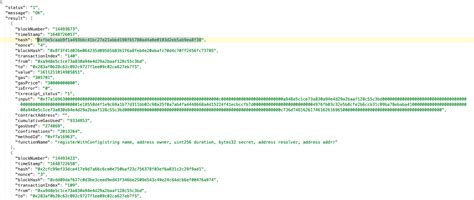3 min de lectura
Ethereum: Transaction signature generation
CRYPTOCURRENCY
Signature generation of transactions in Ethereum
In Ethereum, when you set a new transaction, input data must include a script that includes a signature to demonstrate the ownership of the transfer of funds. This is a key feature of the Blockchain smart contracts that allows for safe and transparent transactions.
In order to understand why transaction signatures are needed, we need to look at previous and current transactions in the Ethereum portfolio or network. In traditional payment systems, such as credit cards or online banking, it is possible to reuse funds without permission from the original account holder. However, in the Ethereum blockchain, each transaction creates a new, unique address and a connected public key.
The role of signatures
Signatures are used to prove that the input data is valid and not forged during transmission. In the context of Ethereum transactions, signatures play a critical role in checking ownership of funds. When the user initiates a transaction, their private key is used to sign a message, which includes the transfer of the amount and any additional instructions.
The signature serves as evidence that the sender has control over the transfer of the funds and has not tried to transfer them elsewhere. This ensures that the funds are spent only as provided and prevents unauthorized transactions.
fields required to generate transaction signature
In order to generate a transaction signature in Ethereum, several fields must be included:
- Transaction ID : Unique transaction identifier.
- Sum : The value is transferred.
- Instructions : Any additional instructions or parameters related to the transaction.
- The sender’s private key : The sender’s private key, which is used to sign the message.
- Signature Data : The signature itself, which includes the public and private keys of the sender.
Signature data must be generated using the following format:
`
{transaction_id}
`
Example

Suppose we have a transaction with the following fields:
- Transaction ID: 0x1234567890abcdef
- Sum: 10 ether
- Instructions: «Send to 0x9876543210FEDCBA»
- Private key to the sender:
`
0x742D35AA7B2A5DF39B6ECF4BCDB38E97F3C15620
`
The signature data will be generated using the above format and will include both public and private keys. The transaction’s received signature will look like this:
`
{Transaction_id «:» 0x1234567890abcdef «,» Quantity «: 10,» Instructions «:» Send at 0x98765410fedcba «,» Sender_private_key «: {» PLIC_KEY «:» E9F3C15220 ‘»Private_Key»: «0x …»}}
`
In summary, the generation of signature of transactions in Ethereum is a critical component of the Blockchain smart contracts system. By incorporating specific fields and using the correct format, it guarantees that each transaction has a unique and secure signature, proving property and prevents unauthorized transactions.